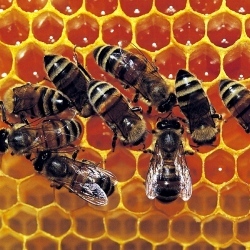
In recent years, bee populations have been dropping rapidly, partly due to a phenomenon known as Colony Collapse Disorder. Scientists also fear pesticides are destroying bee populations, but it is not clear how they are causing damage.
Dave Goulson of Stirling University in Scotland, who led the British study, said some bumblebee species have declined hugely.
"In North America, several bumblebee species which used to be common have more or less disappeared from the entire continent," while in Britain, three species have become extinct, he said in a statement.
The threat to bee populations also extends to Asia, South America and the Middle East, experts say.
Bees are important pollinators of flowering plants, including many fruit and vegetable crops. A 2011 United Nations report estimated that bees and other pollinators such as butterflies, beetles or birds do work worth 153 billion euros ($203 billion) a year to the human economy.
In the first of the Science studies, a University of Stirling team exposed developing colonies of bumblebees to low levels of a neonicotinoid called imidacloprid, and then placed the colonies in an enclosed field site where the bees could fly around collecting pollen under natural conditions for six weeks.
At the beginning and end of the experiment, the researchers weighed each of the bumblebee nests – which included the bees, wax, honey, bee grubs and pollen – to see how much the colony had grown.
Compared to control colonies not exposed to imidacloprid, the researchers found the treated colonies gained less weight, suggesting less food was coming in.
The treated colonies were on average eight to 12 percent smaller than the control colonies at the end of the experiment, and also produced about 85 percent fewer queens – a finding that is key because queens produce the next generation of bees.
In the separate study, a team led by Mickael Henry of the French National Institute for Agricultural Research (INRA) in Avignon tagged free-ranging honeybees with tiny radio-frequency identification microchips glued to each bee’s back. This allowed them to track the bees as they came and went from hives.
The researchers gave some of the bees a low dose of the neonicotinoid pesticide thiamethoxam which they knew would not kill them and compared them to a control group of bees that was not exposed to the pesticide.
The treated bees were about two to three times more likely to die while away from their nests, and the researchers said this was probably because the pesticide interfered with the bees’ homing systems, so they couldn’t find their way home.
Henry said the findings raised important issues about pesticide authorization procedures.
"So far, they (the procedures) mostly require manufacturers to ensure that doses encountered on the field do not kill bees, but they basically ignore the consequences of doses that do not kill them but may cause behavioral difficulties," he said in a statement.
